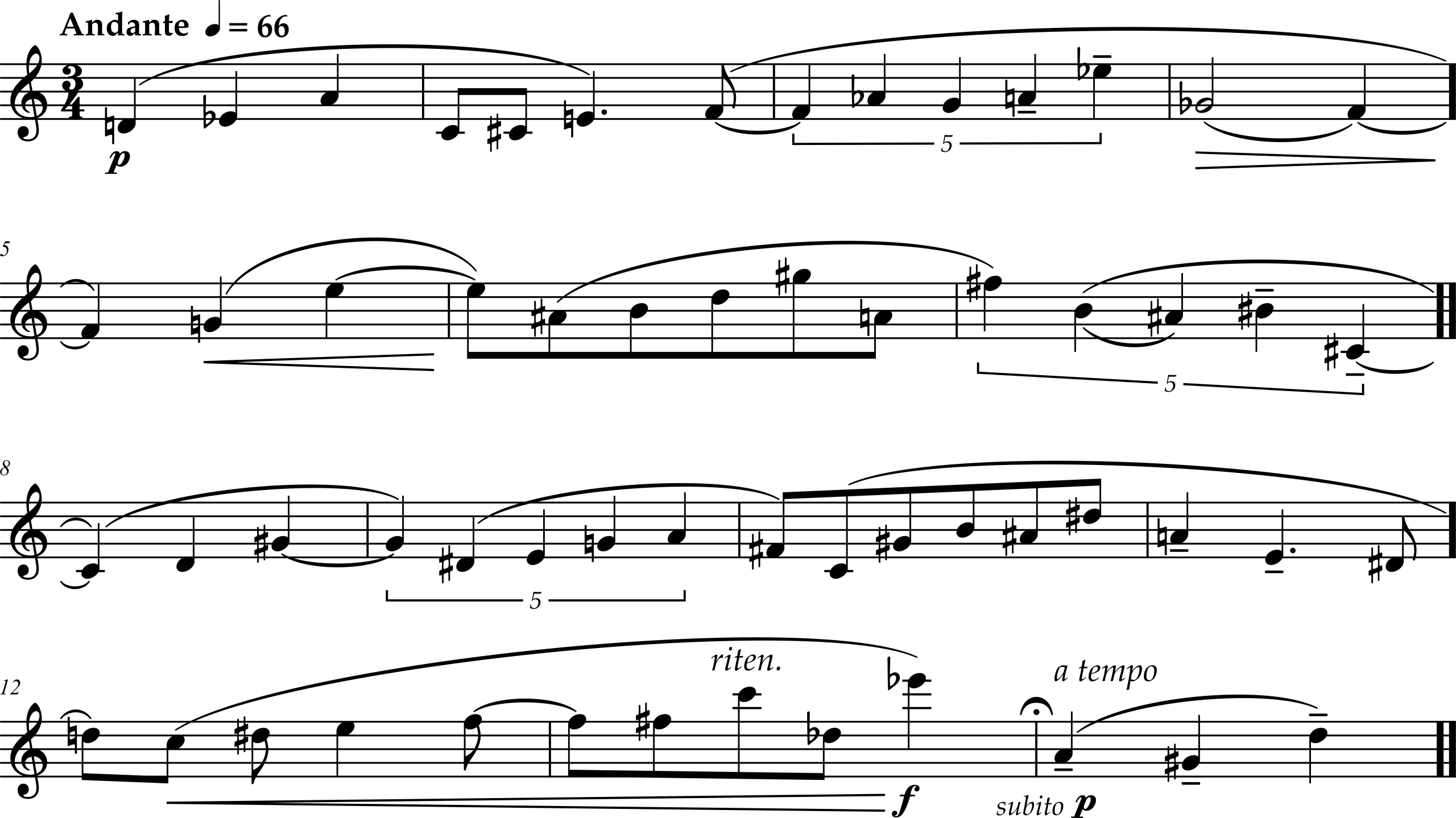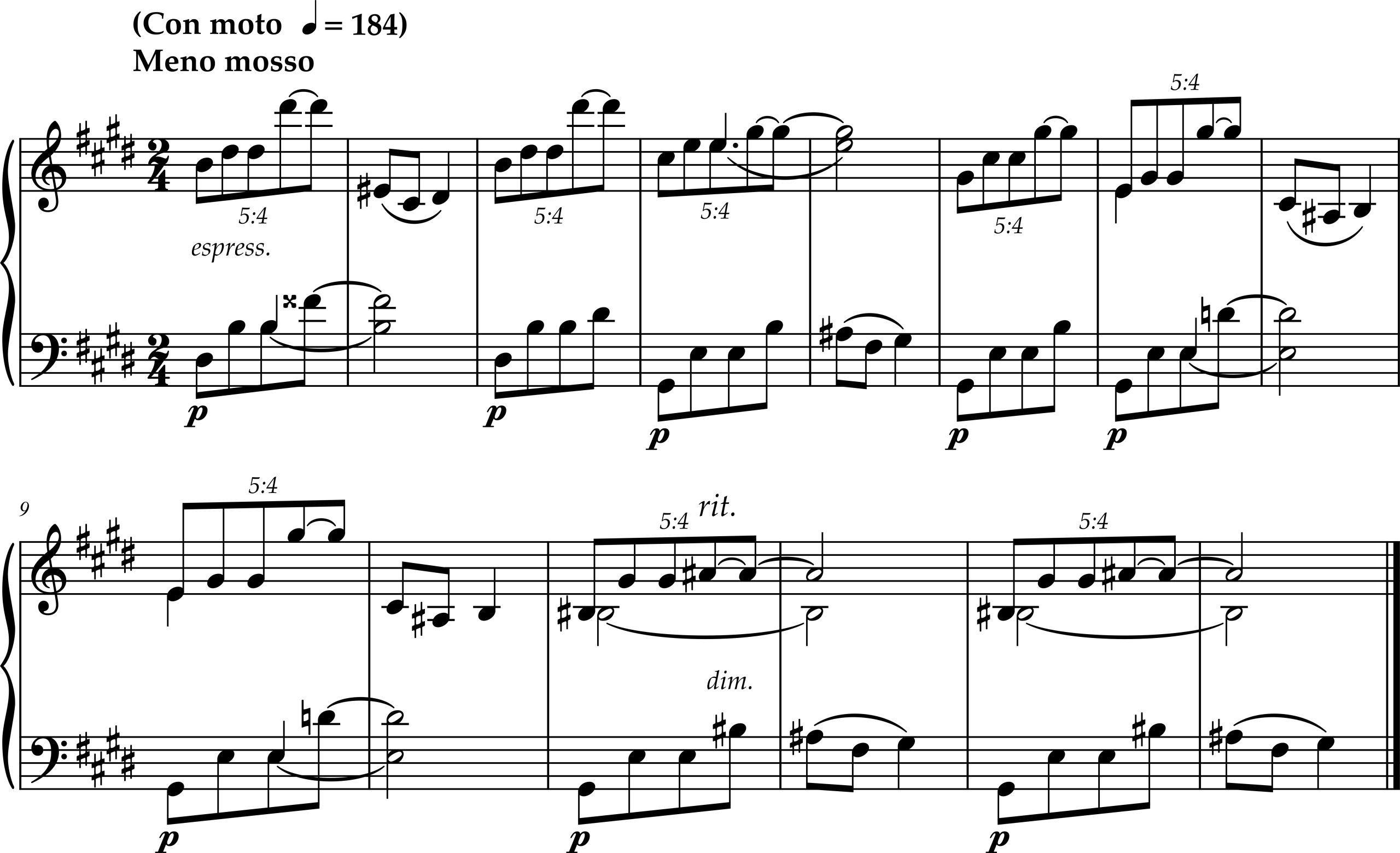B. Large-Value Quintuplets
Single-Line Exercises
Unlike large-value triplets and quadruplets, quintuplets and septuplets spanning multiple beats are not typically structured from a well-chosen subdivision of the beat. Instead, they are typically learned like beat-level quintuplets and septuplets as stable patterns on their own.
A good way in to quintuplets spanning two beats is to take the exercises in the prior section and gradually slow down their tempo to half tempo, switching somewhere in the process to conducting the first division of the beat. The result functionally equivalent to the quintuplets in Exercises 9B-1 and 9B-2 that span two quarter notes.
Exercise 9B-3 features quintuplets spanning three quarter notes. A good way in to this exercises is to return to the five-against-three exercise in the prior section and, again, gradually slow down the tempo.
Exercise 9B-1: Gustav Mahler, Symphony Number 3, Movement 6

Exercise 9B-2: Darius Milhaud, Symphonic Suite Number 2, Movement 5, Final

Exercise 9B-3: Ruth Crawford, Diaphonic Suite for Flute (or Oboe), Movement 2

Two-Part Exercise
Exercise 9B-4: Leoš Janáček, On an Overgrown Path for Piano, Movement 5, “They Chattered Like Swallows”
Exercise 9B-4 features quintuplets spanning two quarter notes superimposed over eighth notes, producing five-against-four. The best approach here is first to stabilize five-against-two, with the quintuplets superimposed over quarter notes. Then, subdivide the quarter notes into eighth notes. As with the two-part exercise in the last section, start by omitting the ties, and then work them back in once the five-against-four pattern is stable.


